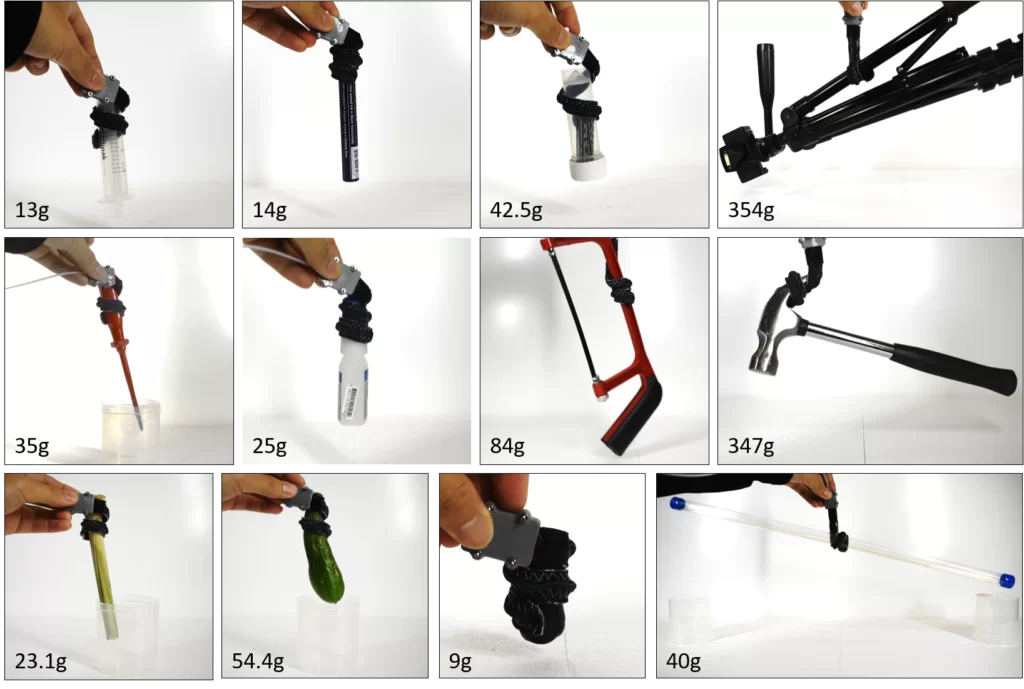A team from the University of New South Wales (UNSW) has created a device that could pave the way for new surgical methods and even the creation of cybernetic humans.
Scientia lecturer Dr Thanh Nho Do and his team at the UNSW Medical Robotics Lab took inspiration from nature to create their latest soft robotic gripper.
Inspired by the helical way in which octopi or elephants pick up objects, Do said the device could revolutionise the use of robotics in surgery.
“Most soft grippers have been developed based on claws or human-like structures consisting of multiple inward-bending fingers, enabling them to grip delicate objects at different sizes and shapes,” Do told create.
“However, this isn’t always useful in every situation. Especially in applications with fragile objects or in confined environments.”
Soft grippers have been popular in the robotics community for some time, Do said, as they offer a safer alternative for humans and targeted objects, compared with current rigid grippers.
“Our gripper can handle particularly delicate products, such as samples of fragile specimens or even food,” Do said.
“As our gripper is soft, and has stiffness tunability, it’s considered human-friendly. It can work closely with human users as an aid for the disabled. But it could also be used for exploration, research and education purposes.”
Nature inspired
To mimic something nature has honed over thousands of years is no easy feat. Do explained the team had no interest in replicating the animals exactly (an elephant’s trunk has up to 40,000 muscles) but more so to imitate the movement.
“We wanted to mimic the way these animals wrap around objects and the sense of control they have over their grip,” he said.
The gripper is thin and flat, and looks almost like a soft ruler when not active. When it does need to pick something up, the gripper transforms into a spiral shape to clasp the object. The gripper also provides real-time touch sensing for the user and can be adjusted while in use to better accommodate whatever it’s picking up.
However, it hasn’t perfectly mastered the ability of snakes and elephants just yet. Do is the first to acknowledge there are still some development hurdles to overcome before robots can mimic Mother Nature more exactly.

“Reaching for objects [and] then grasping and manipulating them is usually an effortless activity for these animals,” Do said.
“Most robots are still far from being capable of natural instinct level grasping and manipulation skills to pick up, hold and release both soft and rigid objects with curved surfaces, or objects with holes such as a hollow tube.”
From snakes to cyborgs
As director of a medical robotics lab, Do and his team’s primary interest in the project is the medical applications for the device.
This includes benefits for surgical procedures, as the gripper could carefully lift organs and delicate tissue while surgeons work.
“If we miniaturise the gripper, we could guide it into the body to grip and lift organs,” Do said.
“It could also have the potential to be used in keyhole surgeries, making them much less invasive for the patient.”
The soft gripper is really just the start for the lab, which is in the process of creating several new medical inventions.
“One project that we are working on that has some similarities to the gripper is a flexible surgical robot for gastrointestinal cancer treatment with real-time haptic display,” Do said.
“Once developed, this robot will open great opportunities in cancer research, and down the line offer a non-invasive surgical method to effectively remove the cancer tumours inside the gastric or colon without leaving any visible scars.”
Another device the team is creating has the potential to change how surgeons operate, perhaps even allowing them to work from another room, or another country.
“We’re developing a soft wearable haptic device that can effectively reproduce the sense of touch for many applications. One example is that a surgeon could remotely control a robot but still feel everything that’s happening,” Do said
“I think it’s something that would be useful during COVID-19; allowing people to touch and feel but still social distance.”
The last device Do said his team is working on involves human augmentation. Like the gripper, this would be a soft robotic object capable of transforming its shape. Do said it has the capability to strengthen weak muscles or help physically disabled persons move.
“It would be a programmable soft robotic skin that can turn passive objects into active ones,” he said.
“So it could be used in smart garments or wearable assistive devices, but excitingly it could be used in human augmentation to make someone stronger. Things like that.”
